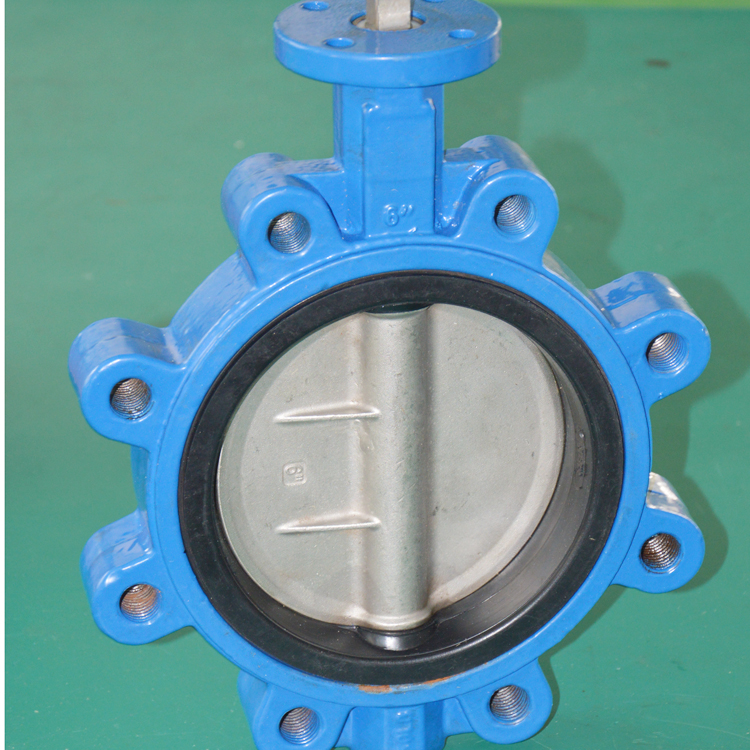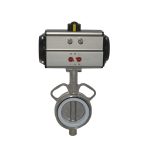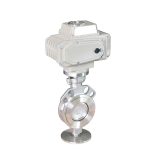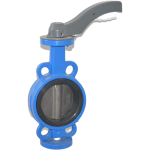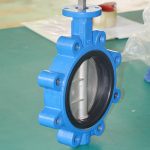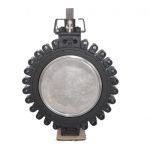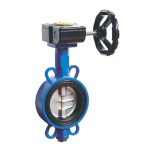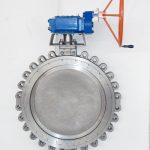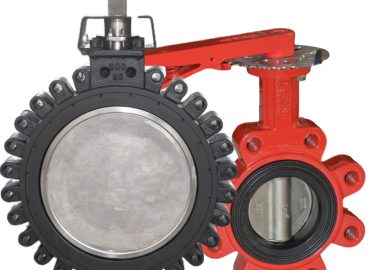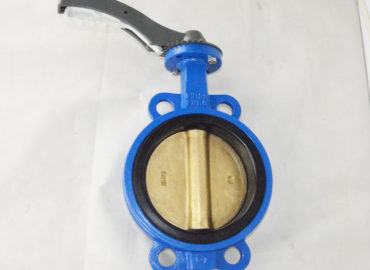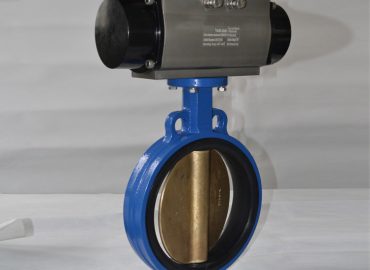In the world of industrial machinery, lugged valves play a crucial role in controlling the flow of fluids. These sturdy devices, known for their durability and versatility, are used in a wide range of applications, from sewage treatment plants to chemical factories. However, ensuring their optimal performance is paramount and this is achieved through rigorous quality and performance testing. This blog post delves into the process of how these essential components, the lugged valves, are put to the test to guarantee their reliability and efficiency in operation. We will explore the factors considered in testing, techniques used, interpretation of results, and strategies for maintaining their performance.
Introduction
The quality and performance of lug butterfly valve are tested through a variety of techniques, each designed to reveal any potential flaws or weaknesses that could affect their efficiency or reliability. The testing process involves several factors, including pressure testing, leakage testing, and performance testing. During pressure testing, the valve is subjected to high-pressure conditions to determine whether it can withstand the demands of its operational environment. Leakage testing involves exposing the valve to different fluids and examining its response to identify any leaking points. Performance testing, on the other hand, evaluates the valve’s ability to regulate fluid flow under varying conditions such as temperature, pressure, and different types of fluids. The results from these various tests are then analyzed using established metrics to determine whether the valve meets the required industry standards. If the valve fails any of these tests, it is either repaired or replaced to ensure that the final product delivers optimal performance. It is important to note that testing is not a one-time process but a continuous process, as regular maintenance checks and inspections are needed to guarantee the continued quality of the lugged valve’s performance over time. Ultimately, the testing process for lugged valves is rigorous and essential in ensuring that these components perform efficiently and reliably in industrial settings.
Brief overview of lugged valve and their applications.
Lugged valves, particularly known as lugged butterfly valves, are a type of flow control device widely used in various industrial settings. Characterized by their simple structure, small size, and light weight, these valves are typically installed between two pipe flanges using stud bolts. The design of lugged valves is quite versatile, making them suitable for a broad range of applications. They are often found in high-pressure systems due to their strength and reliability, and can be operated using either electric or pneumatic actuation. Industries such as food processing, pharmaceutical, and chemical heavily rely on these valves for their operations. Lugged valves are also used in water treatment facilities and HVAC systems. Their ability to regulate fluid flow under varying conditions makes them an invaluable component in many industrial processes.
Importance of testing for quality and performance.
The importance of testing for quality and performance in industrial components such as lugged valves cannot be overstated. These tests are critical in ensuring that the valves function optimally and reliably under different operating conditions. A valve’s ability to control fluid flow effectively directly impacts the efficiency and safety of an entire system. If a valve fails or performs sub-optimally, it can lead to operational issues such as leaks, pressure imbalances, or even system shutdowns. In some cases, these failures can have catastrophic consequences, including environmental damage or health and safety risks. Therefore, rigorous quality and performance testing helps detect any potential issues early, allowing for timely repairs or replacements. Furthermore, consistent testing also contributes to extended valve lifespan, reducing the need for frequent replacements and leading to significant cost savings over time. Hence, quality and performance testing is a vital step in maintaining the integrity of industrial systems.

Understanding Lugged Valve
Lugged valves, most commonly associated with butterfly valves, are a distinct type of valve characterized by their unique design and functionality. These valves are named so because of their ‘lugs’ – protruding lips that provide mounting points for bolts to secure the valve between two pipe flanges. This design makes lugged valves highly versatile, as they can be installed in any orientation and easily removed without disrupting the entire system. They are known for their compact size, lightweight nature, and ability to handle high pressure and temperature conditions, making them suitable for a wide range of applications. Lugged valves are typically used to control the flow of various types of fluids, including air, water, and chemicals, in numerous industries such as pharmaceutical, chemical, food processing, and water treatment. They function by rotating a disc, or ‘butterfly’, within the valve body to either allow or restrict fluid flow. The position of this disc is controlled by an actuator, which can be manual, electric, or pneumatic. Understanding the structure and functionality of lugged valves is crucial to appreciating their role in different industrial settings and the importance of their quality and performance testing.
Detailed explanation of what lugged valve are.
Lugged valves are a specific type of valve characterized by the presence of ‘lugs’, or protruding lips, around their outer edge. These lugs have threaded holes that allow the valve to be bolted between two flanges in a piping system. This design enables the lugged valve to handle higher pressure and makes it easier to install and remove without having to disassemble the entire system. The most common type of lugged valve is the butterfly valve, which operates by rotating a disc or ‘butterfly’ inside a pipe to control the flow of fluid. This disc is attached to a rod, which is connected to an actuator outside the valve. The actuator, which can be manual, electric, or pneumatic, controls the position of the disc, and thus the flow of fluid. Lugged butterfly valves are known for their durability, efficiency, and versatility, making them a popular choice in many industrial applications.
Discussion on the roles and functions of lugged valve in different settings.
Lugged valves play a significant role in various settings due to their versatility and robust design. In industrial applications, they are often used to control the flow of diverse types of fluids including gases, water, and chemicals. For instance, in the chemical and pharmaceutical industries, these valves are essential for managing the flow of different substances during production processes. They are also commonly found in water treatment facilities, where they control the flow of water and other fluids through the system. In the food processing industry, lugged valves are used to regulate the flow of ingredients, ensuring consistency and quality in the final product. Their ability to withstand high pressure and temperatures makes them suitable for HVAC systems as well, where they control the flow of heated or cooled air. Furthermore, lugged valves are designed for easy installation and removal, making them ideal for systems that require frequent maintenance or inspection. Thus, the roles and functions of lugged valves extend across a broad spectrum of settings, emphasizing their importance in various industries.
The Need for Quality and Performance Testing
Quality and performance testing is a crucial aspect of ensuring the reliability and efficiency of industrial components like lugged valves. Given that these valves play a pivotal role in managing the flow of fluids in various industries, any malfunction or substandard performance can have severe consequences, ranging from operational inefficiencies to safety hazards. Therefore, rigorous testing for quality and performance is necessary to detect potential flaws or weaknesses that could compromise the valve’s functionality. These tests typically involve pressure testing, leakage testing, and performance testing under different conditions. Pressure testing checks whether the valve can withstand high-pressure environments, while leakage testing is done to ascertain if there are any leaks when the valve is exposed to different fluids. Performance testing evaluates how well the valve controls fluid flow under varying temperatures, pressures, and fluid types. If a valve fails any of these tests, it signifies a need for repair or replacement. Regular maintenance checks and inspections also form part of quality and performance testing, ensuring long-term reliability. Ultimately, such testing processes are vital in maintaining operational efficiency, system integrity, and safety in various industrial settings.
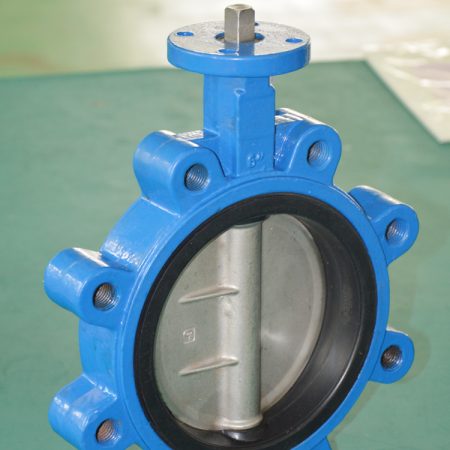
Explanation of why testing is crucial for lugged valves.
Testing is crucial for lugged valves due to their significant role in controlling fluid flow in various industrial systems. These valves are exposed to different operating conditions, including high pressures and temperatures, and they handle a variety of fluids, from gases to corrosive chemicals. Therefore, it’s essential to ensure they can perform reliably under these conditions. Quality and performance testing helps identify any potential issues or weaknesses that could lead to valve failure. For instance, pressure testing ensures the valve can withstand the designated system pressure without leakage or damage. Leakage tests are conducted to detect any leaks that could compromise system efficiency and safety. Performance testing evaluates the valve’s ability to control fluid flow effectively under different conditions. If a lugged valve fails any of these tests, it indicates a need for repair or replacement. Hence, testing is critical not only for ensuring the reliability and longevity of lugged valves but also for maintaining the overall efficiency and safety of the systems they are part of.
Overview of potential issues that could arise if lugged valve are not properly tested.
If lugged valves are not properly tested, a range of potential issues could arise that can significantly impact the efficiency and safety of the systems they control. One common issue is leakage, which can lead to loss of valuable resources, increased operational costs, and even potential environmental hazards in the case of harmful substances. Additionally, if a valve can’t withstand the operational pressure, it may fail completely, leading to system shutdowns and costly repairs or replacements. Substandard performance, such as inconsistent flow control, can also result from inadequate testing. This can cause fluctuations in system performance, impacting the quality of the end product in industries like food processing or pharmaceuticals. In extreme cases, failure of a lugged valve could even pose safety risks, especially in systems handling high-pressure gases or corrosive chemicals. Therefore, skipping or compromising on the quality and performance testing of lugged valves can lead to severe operational, financial, and safety consequences.
Factors Considered in Quality and Performance Testing
Several factors are taken into account during the quality and performance testing of lugged valves to ensure they meet the required standards for their intended application. These factors generally revolve around the valve’s ability to handle its operational environment and perform its function reliably. One key factor is the pressure handling capacity of the valve. Pressure tests are conducted to verify that the valve can withstand the maximum operating pressure of the system it will be installed in without any leakage or structural failure. The valve’s leakage rate is another critical factor. Leakage tests are performed to ensure that the valve seals properly when closed, preventing any unwanted fluid flow. The valve’s performance under different temperatures is also considered, especially for applications involving hot or cold fluids. This involves testing the valve at various temperature ranges to ascertain its durability and reliability. The type of fluid the valve will handle is another factor. For instance, if the valve will control corrosive chemicals, it must be tested with these substances to confirm its resistance to corrosion. The actuator’s performance, which controls the opening and closing of the valve, is also evaluated to ensure smooth and accurate operation. Finally, the valve’s lifecycle, or how many cycles of opening and closing it can perform without failure, is assessed. All these factors contribute to a comprehensive quality and performance test, ensuring the lugged valve can operate safely and efficiently in its intended setting.

List of factors that are considered during quality and performance testing of lugged valve.
During the quality and performance testing of lug valve, a variety of factors are meticulously considered to ensure their robustness and efficiency. Firstly, the pressure handling capacity of the valve is assessed through pressure tests to confirm that it can withstand the maximum operating pressure without leakage or structural failure. Secondly, leakage tests are conducted to evaluate the valve’s sealing capabilities when closed, preventing any unwanted fluid flow. The valve’s ability to perform under different temperatures is another crucial aspect, especially in applications involving hot or cold fluids. Therefore, temperature tests are carried out to determine the valve’s reliability and durability under various temperature ranges. The type of fluid the valve will handle also impacts its testing process. For instance, if the valve is expected to control corrosive chemicals, corrosion resistance tests using these substances are essential. The functionality of the actuator, which controls the opening and closing of the valve, is also evaluated for smooth and precise operation. Lastly, the valve’s lifecycle, indicating how many cycles of opening and closing it can perform without failure, is assessed. In conclusion, these factors collectively ensure a comprehensive and effective quality and performance test for lugged valves.
Explanation of how these factors affect the overall performance of the valve.
The factors considered during the quality and performance testing of lugged valve greatly affect their overall performance in their operational environment. The pressure handling capacity of the valve, for instance, directly influences its ability to function properly in high-pressure systems without failure or leakage. A valve that can’t handle the system’s pressure could fail, leading to potential system shutdowns and costly repairs. Leakage tests ensure that the valve seals properly, preventing unwanted fluid flow that could compromise system efficiency and safety. The valve’s performance under different temperatures affects its reliability in systems involving hot or cold fluids. A valve that fails under extreme temperatures can disrupt the entire system’s operation. The type of fluid the valve handles also impacts its durability and longevity, especially when dealing with corrosive chemicals. An improperly tested valve could corrode over time, affecting its performance and potentially contaminating the fluid it controls. The actuator’s performance is crucial for precise opening and closing of the valve, ensuring accurate control of fluid flow. Lastly, the valve’s lifecycle determines how long it can function without failure, directly impacting maintenance schedules and operational costs. Therefore, each of these factors plays a significant role in determining the overall performance and reliability of the lugged valve in its intended application.
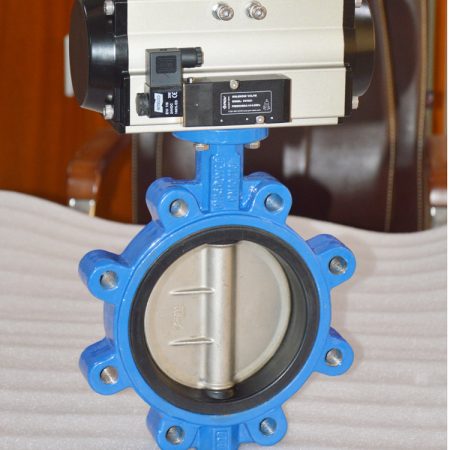
Techniques Used in Testing Lugged Valves
Several techniques are employed in the testing process of lugged valves to ensure they meet the highest quality and performance standards. One common technique is pressure testing, where the valve is subjected to pressures higher than its maximum operating pressure to ascertain its strength and durability. This test helps identify any structural weaknesses that could lead to failure under high-pressure conditions. Another technique is the leakage test, which involves applying pressure to the closed valve and checking for any leaks. This test ensures the valve seals properly when closed, preventing unwanted fluid flow. For valves that will handle corrosive chemicals, corrosion resistance tests are conducted. These involve exposing the valve to the specific chemicals it will control to evaluate its resistance to corrosion. Temperature testing is another critical technique, especially for valves operating in extreme temperature environments. The valve is tested at various temperature ranges to check its performance and reliability under these conditions. The actuator’s functionality, responsible for controlling the opening and closing of the valve, is also tested to ensure smooth and accurate operation. This might involve electrical tests for electric actuators or pressure tests for pneumatic actuators. Finally, lifecycle tests are conducted to determine how many cycles of opening and closing the valve can perform without failure. These tests typically involve repeatedly opening and closing the valve until it fails, providing an estimate of its lifespan. Each of these techniques contributes to a comprehensive evaluation of the valve’s quality and performance, ensuring it can function safely and efficiently in its intended application.
Detailed discussion of the techniques used to test lugged valve, such as pressure tests, leakage tests, and performance tests.
Testing lugged valves involves several intricate techniques, each designed to assess a specific aspect of the valve’s functionality. Pressure tests, for instance, are conducted to evaluate the valve’s ability to withstand high pressure without failure. This involves subjecting the valve to pressures higher than its maximum operating capacity and observing its structural integrity. Leakage tests, on the other hand, are focused on assessing the sealing capability of the valve. The valve is closed and pressurized, and any leaks are monitored. This ensures that the valve can effectively seal off fluid flow when required, preventing unwanted leaks that could compromise system efficiency or safety. Performance tests encompass a range of evaluations, including temperature tests and actuator functionality tests. Temperature tests involve subjecting the valve to different temperature ranges to check its durability and performance under extreme conditions. Actuator tests ensure that the component responsible for controlling the opening and closing of the valve operates smoothly and accurately. Collectively, these techniques provide a comprehensive assessment of the lugged valve’s quality and performance, ensuring it is fit for its intended application and can operate reliably under various conditions.

Description of how each testing technique works.
Each testing technique used for lugged valves serves a specific purpose and works in a unique way to evaluate different aspects of the valve’s performance. Pressure tests involve subjecting the valve to pressures exceeding its maximum operating pressure. This is done using a controlled environment where the internal pressure of the valve is steadily increased while monitoring for any deformation or damage to the valve structure. Leakage tests work by closing the valve, applying pressure, and then examining it for any signs of leaks. This helps ensure that the valve can effectively seal off fluid flow when needed. Performance tests are more varied and include temperature tests and actuator functionality tests. Temperature tests are conducted by exposing the valve to various temperature ranges, both high and low, to see how it performs under these conditions. This ensures the valve can function reliably even in extreme temperatures. Actuator functionality tests, on the other hand, focus on the component controlling the opening and closing of the valve. These tests typically involve mechanical evaluations to ensure the actuator operates smoothly and accurately. Each of these testing techniques contributes to a comprehensive picture of the lugged valve’s quality and performance, ensuring it meets the necessary standards for its intended application.
Interpreting Test Results
Interpreting test results from lugged valves involves a thorough analysis of the data gathered from the various testing techniques. For pressure tests, the valve should ideally withstand pressures greater than its maximum operating pressure without any signs of deformation or damage. If the valve fails under these conditions, it might indicate structural weaknesses that could lead to failure in its operational environment. Leakage tests aim to ensure zero leakage when the valve is closed. Any detected leakage could signify a problem with the sealing mechanism, potentially compromising the efficiency and safety of the system the valve will be part of. Temperature test results are interpreted by evaluating the valve’s performance under different temperature ranges. If the valve fails to function effectively under extreme conditions, it might not be suitable for systems involving hot or cold fluids. Results from the corrosion resistance tests need to show that the valve can withstand corrosive substances without any significant degradation, ensuring its durability and longevity. Actuator functionality tests should demonstrate smooth and accurate operation of the actuator, which is crucial for precise control of fluid flow. Lastly, lifecycle test results provide an estimate of the valve’s lifespan by determining how many cycles of opening and closing it can perform without failure. These results can inform maintenance schedules and operational costs. Interpreting these test results collectively gives a comprehensive understanding of the lugged valve’s quality and performance, helping to determine its suitability for a particular application.
Explanation of how to interpret the results from these tests.
Interpreting the results from the various tests conducted on lugged valves requires a comprehensive understanding of the valve’s intended function and operational environment. For pressure tests, the valve should ideally withstand pressures beyond its maximum operating pressure without any structural damage. Any failure under these conditions could signify potential weaknesses that may affect the valve’s performance in high-pressure systems. In leakage tests, any detected leakage when the valve is closed would indicate a problem with its sealing capabilities, which could impact system efficiency and safety. Temperature test results need to be evaluated based on the valve’s expected operating temperature range. Any performance issues at extreme temperatures could suggest the valve might not be suitable for certain environments. The results of corrosion resistance tests should demonstrate the valve’s ability to withstand corrosive substances, ensuring it can maintain its integrity and function over time. Actuator functionality tests are interpreted by assessing the smoothness and accuracy of the actuator operation. Any inconsistencies could affect the precise control of fluid flow. Finally, lifecycle test results provide an estimate of how many cycles the valve can perform without failure, which can inform maintenance schedules and predict potential operational costs. Overall, interpreting these test results involves a careful examination of each aspect of the valve’s performance against its intended function and operational requirements.
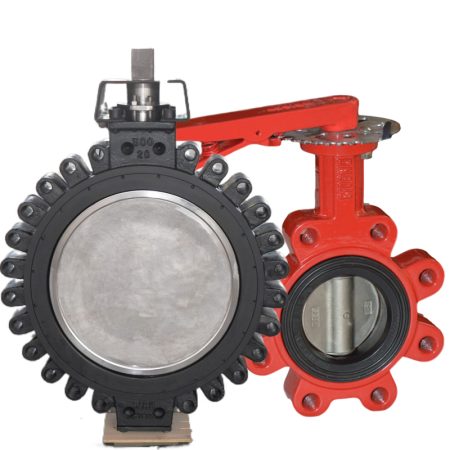
Discussion on what constitutes a ‘pass’ or ‘fail’ in these tests.
In the testing of lugged valves, a ‘pass’ or ‘fail’ is determined by whether the valve meets the established standards for each specific test. In pressure tests, a ‘pass’ would mean that the valve withstands pressures beyond its maximum operating pressure without showing signs of structural damage or deformation. A ‘fail’ would occur if the valve cannot handle these pressures or shows signs of possible failure. Leakage tests consider a ‘pass’ when no leaks are detected when the valve is closed under pressure. Any leakage would constitute a ‘fail’, indicating issues with the valve’s sealing mechanism. In temperature tests, a ‘pass’ requires the valve to function effectively across the intended temperature range. Failure to do so would result in a ‘fail’. Corrosion resistance tests deem a ‘pass’ when the valve shows no significant degradation after exposure to corrosive substances. Any noticeable corrosion would lead to a ‘fail’. Actuator functionality tests give a ‘pass’ when the actuator operates smoothly and accurately, while any inconsistencies or malfunctions would result in a ‘fail’. Lastly, lifecycle tests consider a ‘pass’ when the valve can perform the estimated number of cycles without failure. Falling short of this estimate would be considered a ‘fail’. These pass or fail criteria ensure the valve is fit for its intended application and can operate reliably under various conditions.
Ensuring Continued Performance
Ensuring continued performance of lugged valves requires a combination of regular maintenance, periodic testing, and careful monitoring of operating conditions. Regular maintenance involves cleaning the valve, inspecting for any signs of wear or damage, and replacing any degraded components. This helps to prevent failures and extend the lifespan of the valve. Periodic testing is also crucial to ensure the valve continues to meet its performance standards. This might involve repeating some of the initial tests, such as pressure tests, leakage tests, and actuator functionality tests, to confirm that the valve is still performing at its optimal level. Monitoring the operating conditions is another important aspect of ensuring continued performance. This involves keeping track of the pressure, temperature, and type of fluid the valve is handling. Any changes in these conditions could affect the valve’s performance, and therefore should be closely monitored. In case of any significant changes, the valve might need to be retested or adjusted to ensure it can handle the new conditions. Additionally, any issues detected during monitoring or testing should be addressed promptly to prevent further degradation and potential failure. By implementing these measures, the continued performance of the lugged valve can be ensured, contributing to the overall efficiency and reliability of the system it is part of.
Tips and strategies for maintaining the quality and performance of lugged valve after testing.
Maintaining the quality and performance of lugged valves after testing involves several key strategies. Firstly, regular inspection is crucial to spot any signs of wear, damage, or corrosion at an early stage. This includes checking the valve body, the sealing mechanism, and the actuator for any issues. Secondly, routine cleaning can prevent build-up of debris that might interfere with the valve’s operation. Thirdly, periodic retesting is important to ensure the valve continues to meet its performance standards even after prolonged use. This can involve repeating some of the initial tests, like pressure tests or leakage tests. Fourthly, monitoring the operating conditions, such as the pressure, temperature, and type of fluid the valve handles, can help detect any changes that might affect the valve’s performance. If any significant changes are observed, the valve might need to be adjusted or retested. Lastly, prompt action should be taken to address any issues detected during inspection, cleaning, retesting, or monitoring. This could involve repairing or replacing parts as necessary. By implementing these strategies, the quality and performance of the lugged valves can be maintained, ensuring their reliability and longevity in the system they are part of.
Discussion on the importance of regular maintenance and checks.
Regular maintenance and checks are crucial for the optimal performance and longevity of lugged valves. These procedures help identify any potential issues at an early stage, preventing minor problems from escalating into major failures that could disrupt the entire system’s operation. Regular inspections can detect signs of wear, damage, or corrosion that might affect the valve’s functionality. Cleaning helps remove any debris build-up that could interfere with the smooth operation of the valve. Retesting the valve periodically ensures it continues to meet its performance standards, even after extended use. Moreover, regular checks of the operating conditions, such as pressure, temperature, and the type of fluid being handled, can help identify any changes that could impact the valve’s performance. Timely detection and addressing of these issues through regular maintenance and checks not only extend the valve’s lifespan but also maintain the overall efficiency and reliability of the system the valve is part of. Hence, regular maintenance and checks are an essential part of managing lugged valves.

Conclusion
In conclusion, the quality and performance of lugged valves are rigorously tested through a series of comprehensive tests designed to evaluate their ability to withstand various operational conditions. These tests include pressure tests, leakage tests, temperature tests, corrosion resistance tests, actuator functionality tests, and lifecycle tests. Each test plays a crucial role in determining the valve’s durability, reliability, and efficiency under different circumstances.
Interpreting the results from these tests requires a thorough understanding of the valve’s intended function and operational environment. A ‘pass’ or ‘fail’ in these tests is determined by whether the valve meets the established standards for each specific test. Any inconsistencies or failures in these tests could signify potential weaknesses that may impact the valve’s performance and safety.
However, testing is only the first step in ensuring the optimal performance of lugged valves. Regular maintenance, periodic retesting, and careful monitoring of operating conditions are equally important for maintaining the quality and performance of these valves over time. Regular inspections can detect signs of wear, damage, or corrosion early on, while routine cleaning prevents debris build-up that might interfere with the valve’s operation.
Retesting the valve periodically ensures it continues to meet its performance standards even after extended use. Monitoring the operating conditions can also help detect any changes that could impact the valve’s performance. Prompt action should be taken to address any issues detected during inspection, cleaning, retesting, or monitoring.
In summary, the testing of lugged valves is a complex process that requires meticulous attention to detail, but it is essential for ensuring their reliability and efficacy. By combining rigorous testing with regular maintenance and careful monitoring, we can ensure the continued performance of these critical components, contributing to the overall efficiency and reliability of the systems they are part of.
Recap of the importance of quality and performance testing for lugged valve.
To recap, the quality and performance testing of lugged valves is an integral part of ensuring their reliability and efficiency in various systems. These tests, which include pressure tests, leakage tests, temperature tests, corrosion resistance tests, actuator functionality tests, and lifecycle tests, provide a comprehensive evaluation of the valve’s ability to withstand different operational conditions. A ‘pass’ in these tests signifies that the valve meets the established standards, while a ‘fail’ indicates potential weaknesses that could impact its performance. Beyond testing, regular maintenance, periodic retesting, and careful monitoring of operating conditions are critical for maintaining the valve’s quality and performance over time. By detecting and addressing any issues early on, we can extend the valve’s lifespan and maintain the overall efficiency and reliability of the system it’s part of.
Encouragement for industry professionals to prioritize regular testing and maintenance.
For industry professionals, prioritizing regular testing and maintenance of lugged valves is a crucial step towards ensuring the efficiency and longevity of your systems. These processes are not just preventive measures, but they are also proactive approaches to identifying potential issues before they escalate into major problems that could disrupt operations. Regular testing ensures that the valves continue to meet performance standards even after prolonged use, while maintenance helps prevent wear and damage. Remember, a well-maintained valve not only performs better but also lasts longer, contributing to the overall reliability of your system. So, make regular testing and maintenance a routine practice. It’s an investment in the performance and durability of your equipment, leading to more significant returns in the long run.


